Pulse Duration
Definition: the duration of an optical pulse
German: Pulsdauer, Pulslänge
Categories: light detection and characterization, optical metrology, light pulses
Formula symbol: τp
Units: s
How to cite the article; suggest additional literature
Author: Dr. Rüdiger Paschotta
The duration of optical pulses (also called pulse width or pulse length) can vary in a huge range:
- By modulating a continuous-wave light source, e.g., with an electro-optic modulator, pulses with durations from some tens of picoseconds to arbitrarily high values can be generated.
- Gain switching e.g. of laser diodes leads to pulses with durations down to a few nanoseconds or even to some hundred picoseconds.
- Pulse durations from Q-switched lasers typically vary between 100 ps and hundreds of nanoseconds.
- Mode-locked lasers can generate pulses with durations between ≈ 5 fs and hundreds of picoseconds.
- High harmonic generation allows the formation of single attosecond pulses or attosecond pulse trains, with pulse durations of a few hundred attoseconds or even below 100 as.
Here is an overview on the common prefixes:
- 1 ms (millisecond) = 10−3 s
- 1 μs (microsecond) = 10−6 s
- 1 ns (nanosecond) = 10−9 s
- 1 ps (picosecond) = 10−12 s
- 1 fs (femtosecond) = 10−15 s
- 1 as (attosecond) = 10−18 s
Definition of the Pulse Duration
There are actually different definitions of a pulse duration:
- The most frequently used definition is based on the full width at half-maximum (FWHM) of the optical power versus time. This is not sensitive to some weak pedestals as often observed with optical pulses.
- For calculations concerning soliton pulses, it is common to use a duration parameter τ which is approximately the FWHM duration divided by 1.76, because the temporal profile can then be described as a constant times sech2(t / τ).
- For complicated pulse profiles, a definition based on the second moment of the temporal intensity profile is more appropriate.
- Particularly in the context of laser-induced damage, one sometimes uses an effective pulse duration, which is defined as the pulse energy divided by the peak power.
Time–Bandwidth Product
The product of pulse duration and spectral bandwidth is called the time–bandwidth product. Typically, is calculated using FWHM values of duration and bandwidth (see above). It can not be much smaller than ≈ 0.3, depending on the pulse shape and the exact definition of pulse duration and bandwidth. This means that e.g. a 10-fs pulse must at least have a bandwidth of the order of 30 THz, and attosecond pulses have such a large bandwidth that their center frequency must be well above that of any visible light.
See also the article on the transform limit.
Measurement of Pulse Durations
Pulse durations down to roughly 10 ps can be measured with the fastest available photodiodes in combination with fast sampling oscilloscopes. For the measurement of shorter pulse durations, streak cameras can be used. Another approach is optical sampling (or cross-correlation), using another source generating even shorter pulses. In most cases, however, one uses optical autocorrelators. Note that there are also techniques such as FROG or SPIDER (→ spectral phase interferometry), which can be used to obtain much more information on pulses than e.g. just the pulse duration and energy; see the article on pulse characterization.
Spatial Width of a Pulse
The spatial width of a pulse in the propagation direction is given by the group velocity times the temporal pulse width. Despite the high velocity of light, ultrashort pulses can also be very short in the spatial domain. Whereas e.g. a 1-ns pulse still has a length of ≈ 30 cm in air, the shortest pulses which can be generated directly with a laser – with a duration of roughly 5 fs – have a spatial length of just 1.5 μm in air or vacuum. This corresponds to only a few wavelengths, or temporally a few optical cycles (few-cycle pulses). As the transverse dimensions, characterized e.g. with a beam radius, are usually much larger than that, few-cycle pulses can be imagined to be like pancake-shaped bullets of light. This aspect is important; it explains e.g. why the apparent pulse duration as measured with an intensity autocorrelator can be increased when this measurement apparatus involves pulses crossing each other at some significant angle.
Effects Which Can Affect the Pulse Duration
While pulses with durations of nanoseconds or longer hardly experience any changes of pulse duration during propagation even over long distances, ultrashort pulses are sensitive to various effects:
- Chromatic dispersion can lead to substantial pulse broadening, which can however be reversed by subsequently applying the opposite kind of dispersion (→ dispersion compensation).
- Nonlinearities would normally not directly affect the pulse duration, but can e.g. broaden the optical spectrum, which makes the pulses more sensitive to chromatic dispersion during subsequent propagation.
- Any type of optical filter, including a gain medium with limited gain bandwidth, can affect the spectral width or shape of an ultrashort pulse. When the spectral width is reduced, this may lead to temporal broadening, even though there are cases where strongly chirped pulses become shorter when their spectrum is made narrower.
In the steady-state operation of a mode-locked laser, the circulating pulses experience various effects which affect the pulse duration, but these effects are in a balance, so that the pulse duration is restored after every round trip. In some femtosecond lasers, the pulse duration undergoes substantial changes during each resonator round trip.
Spatio-Temporal Effects
The definition and measurement of the pulse duration becomes considerably more complicated in cases where spatial and temporal pulse properties are coupled with each other. An example is the phenomenon of pulse front tilt, where a locally measured pulse duration may be smaller than a duration based on the whole beam profile.
Suppliers
The RP Photonics Buyer's Guide contains 20 suppliers for pulse duration measurement devices. Among them:

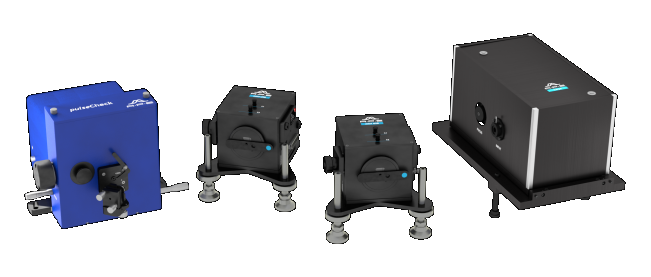
APE
APE autocorrelators are used to measure the pulse duration of femtosecond and picosecond laser systems. The technology is based on either second harmonic generation (SHG) detection or two-photon absorption (TPA) detection principle.
- pulseCheck: multitalent for any task
- Mini TPA: compact and tuning-free
- Mini PD: routine tasks with a fixed wavelength range
- Carpe: first choice for multiphoton microscopy
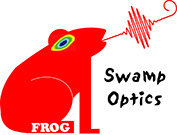
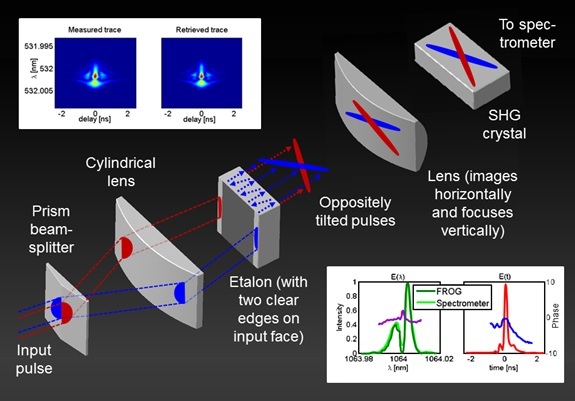
Swamp Optics
Pulse durations and many other properties of ultrashort pulses can be conveniently measured with our FROG and GRENOUILLE instruments. Several off-the-shelf FROGs and GRENOUILLEs are available, for pulses from 10 femtoseconds to several picoseconds. With customization options, these devices cover from 4 fs to 4 ns, and from UV to IR. We also offer OEM solutions at reasonable costs and lead times.

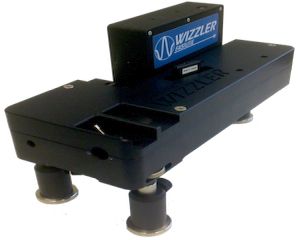
Fastlite
The Wizzler products provide high contrast and single shot spectral phase and intensity measurements of nearly compressed ultrafast laser pulses. They are extremely easy to install and to operate, and have become the reference tool for the high intensity laser physics user community. Based on a patented Self-Referenced Spectral Interferometry technique (SRSI), the Wizzler is also easily combined with our Dazzler pulse shaper to automatically optimize the pulse compression of ultrafast amplifiers.

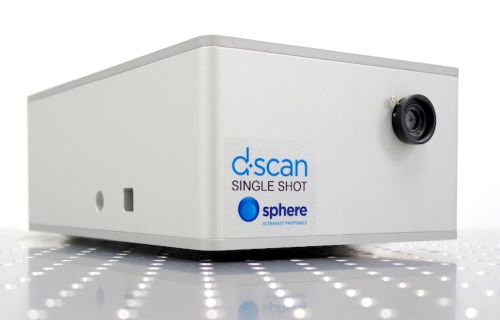
Sphere Ultrafast Photonics
The d-shot is a compact system for the comprehensive characterization of ultrafast laser pulses, including pulse duration measurements. Its supports optical spectra corresponding to pulse durations around 10–70 fs and works with pulse repetition rates ranging from sub-Hz to hundreds of kHz or even MHz. Coupling the laser beam into the d-shot is easily achieved in less than five minutes, and a full measurement (including retrieval) usually takes less than 10 s.
The intuitiveness of the d-shot trace provides instant visual feedback for the optimisation of your source. This d-shot system is a practical tool for real-time alignment and optimisation of your compressor or pulse shaper.
Questions and Comments from Users
Here you can submit questions and comments. As far as they get accepted by the author, they will appear above this paragraph together with the author’s answer. The author will decide on acceptance based on certain criteria. Essentially, the issue must be of sufficiently broad interest.
Please do not enter personal data here; we would otherwise delete it soon. (See also our privacy declaration.) If you wish to receive personal feedback or consultancy from the author, please contact him e.g. via e-mail.
By submitting the information, you give your consent to the potential publication of your inputs on our website according to our rules. (If you later retract your consent, we will delete those inputs.) As your inputs are first reviewed by the author, they may be published with some delay.
See also: pulses, ultrashort pulses, pulse characterization, pulse front tilt, pulse generation, photodiodes, autocorrelators, frequency-resolved optical gating, streak cameras
and other articles in the categories light detection and characterization, optical metrology, light pulses
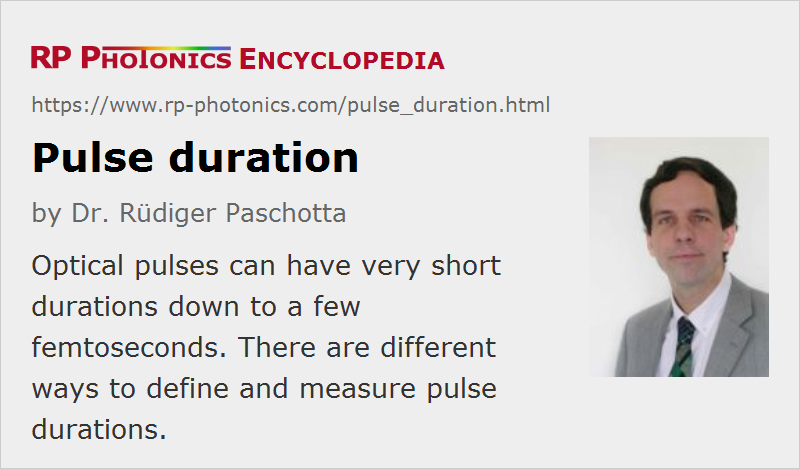 |




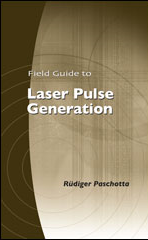
If you like this page, please share the link with your friends and colleagues, e.g. via social media:
These sharing buttons are implemented in a privacy-friendly way!